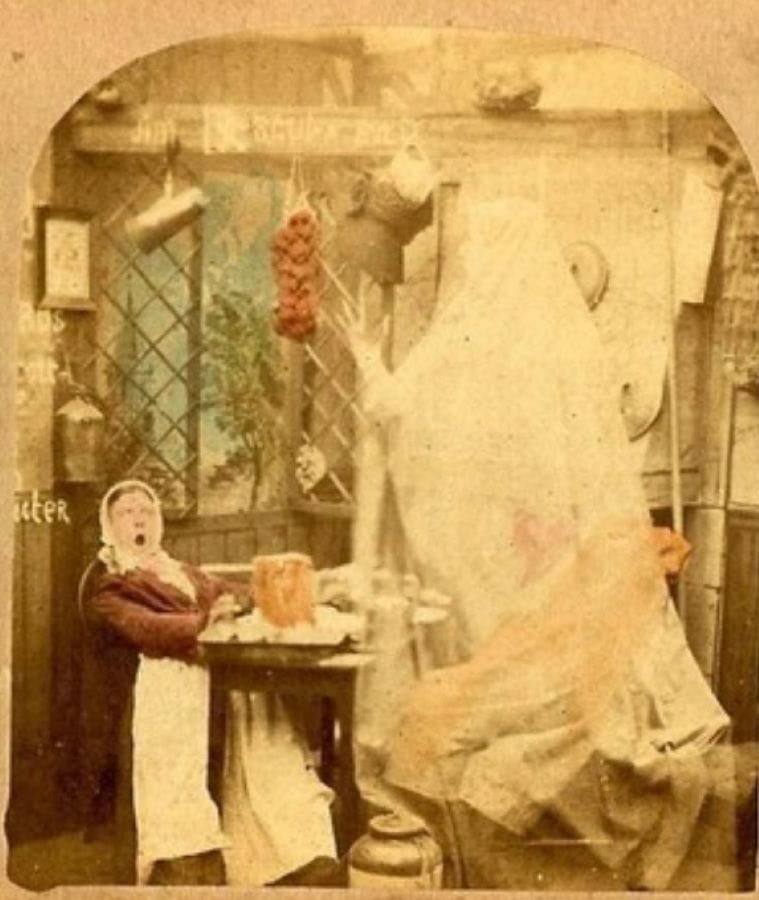Spirit photography was more than just an 1800s curiosity. Picture a New York photo studio in 1865. A family sits for a portrait at a local photography studio to immortalize themselves in print. They recently lost their son Arthur in a Civil War battle. There were no photographs of Arthur, something they deeply regret. After negotiating a price and having a nice chat with the photographer, they sat for the portrait. As they sat as still as possible, the photographer captured their image. When they see the photo for the first time, there they all were, in their best dress and finely combed hair. Everyone looked good, Mother, Father, daughter Violet, young Frederick, and, faintly, Arthur. Arthur? The family just waded into the world of spirit photography, a way to show Arthur lives on. It was more than special effect- it was a connection with the afterlife.

ADVERTISEMENT - CONTINUE READING BELOW
Earliest Ghosts and Trick Photography
The earliest ghost images were deliberately playful, intended to be amusing special effects. These commercially produced stereocards sold for entertainment purposes only. There was no effort to claim they were actually capturing a spirit in the image. It was well-announced play-acting, and books like Walter Woodbury’s book Photographic Amusements explained how photographers could create their own ghosts. These early ghosts were created by first posing the sitter and the ghost together, with the ghost dressed in a white sheet or other ‘otherworldly’ garb. The pair would pose together for part of the exposure. The lens would be covered again while the ‘ghost’ left the frame, leaving only the main subject to sit for the rest of the exposure. As the film developed, the sitter who remained for the whole exposure looked perfectly intact, but there was only a faint, transparent image of the ‘ghost.’

